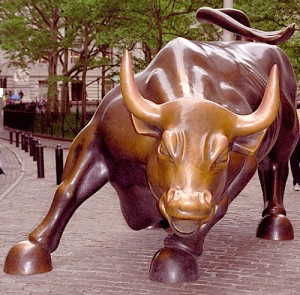 In case you don’t know what an asymmetric investment means, asymmetry is the opposite of symmetry. Thus, in a “symmetrical” investment (for example, you bought stocks), the probability of those stocks going up and going down is theoretically 50-50 (hence the symmetry). Oppositely, in an asymmetric investment the probability is jiggered in your favor beforehand – the odds of the market moving in a direction that’s favorable to your investment is far greater than the odds of the market moving against your investment. Hence, the important question is, how does one create an asymmetric investment? There are 2 methods – the best investors combine these two methods.
In case you don’t know what an asymmetric investment means, asymmetry is the opposite of symmetry. Thus, in a “symmetrical” investment (for example, you bought stocks), the probability of those stocks going up and going down is theoretically 50-50 (hence the symmetry). Oppositely, in an asymmetric investment the probability is jiggered in your favor beforehand – the odds of the market moving in a direction that’s favorable to your investment is far greater than the odds of the market moving against your investment. Hence, the important question is, how does one create an asymmetric investment? There are 2 methods – the best investors combine these two methods.
Asymmetric Market Prediction
An asymmetric market prediction is exactly what it sounds like – the odds that your market prediction is right is greater than the odds of it being wrong. An asymmetric market prediction is completetely based upon 1 fact: history repeats itself.
Obviously, history doesn’t exactly repeat itself, or else we’d still be in the days of the Flintstones. However, the SYMPTOMS in history are always the same. Symptoms such as economic growth, contraction, loose monetary policy, etc are always the same (there are only so many types of economic conditions!). Same story, different scenery.
Here are the steps to creating an asymmetric market prediction:
1. Current market conditions
Write down a list of characteristics that pertain to today’s market. What are the economic conditions driving this market (economist growth, deleveraging, technological innovation, etc)? What is the price pattern like? What has the market’s wave pattern been like recently?
2. Go through History
Find historical examples when the market conditions match that of today’s. Historically, I do not go any farther than 1930 because prior to the 30’s, the stock market was heavily manipulated by individual players (read Reminisces of a Stock Operator). Thus, I cannot accurately use pre-1930’s markets to reflect today’s market, a market so large that no individual player can impact it in any meaningful way.
3. List all the Possible Outcomes
Now that you’ve got a list of historical examples when the market conditions matched that of today’s, compile another list of ensuing outcomes. For example, what happened when history fulfilled criteria X, Y, and Z? What was the next step that the markets took? Bullish or bearish?
The last part of really easy. Whichever outcome was most probable (in Step 3) will be most likely to happen in today’s market. Hence, an asymmetric investment is made because history is skewed in your favor.
Asymmetric Expression
How you express your market prediction (via what financial product you choose) is just as important as the market prediction itself. Let me use a wild example that has happened to me before. Back in 2008, I was extremely bearish on on the finance industry as a whole (back in the day when banks were imploding left right and center). Since I wasn’t sure which bank was going to be the worst, I decided to express this bearishness via shorting a financial sector ETF. I’m just going to skip all the complex math behind an ETF, because it’s not relevant to this story. But long story short, despite the fact that the financial sector faced something akin to the Rapture, I ended up making no money. I was dead right, but I made no money because the way I expressed my market prediction was wrong! My point is, how you choose to express your belief can be more important than the actual belief itself. Some investors are so skilled that their market prediction can be wrong, but they can still escape with a little bit of profit because the way their position sizes are set up.
To asymmetrically express a trade, you need to find a financial product that inherently has asymmetry within it. Stocks inherently are not asymmetrical – theoretically speaking, stocks have just as much room to fall as they have room to rise in price. Other financial products, such as options, are inherently asymmetric. On any given options trade (investors tend to avoid options because the math behind them is really complex), the risk is limited whereas the potential profit is unlimited. That is the essence of asymmetry.
- Limited risk, unlimited potential profit.
Options have this characteristic because in any option, all the buyer can potentially lose is the premium he paid for the option, whereas the potential profit is literally a hundredfold the premium.
Hence, many investors and traders avoid making outright bullish or bearish bets (buying stocks outright, etc). Instead, they choose to express that bullishness or bearishness through an asymmetric financial product such as a call option (bullish option) or put option (bearish option).
Combine These Two
Just to recap, the best investors combine these two types of asymmetry. They make asymetric market predictions, and then express that market prediction through an asymmetric financial product such as options.
Troy runs a finance blog at The Financial Economist where he analyzes current economic events and shares investment know-how. If you’re interested in making yourself a better investor, feel free to check his his blog.

2 Comments
Comments are closed.